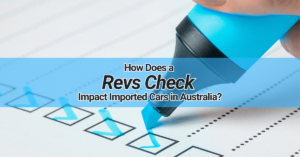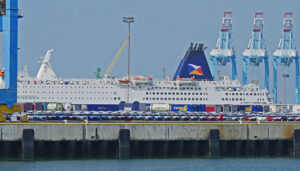Importing a car into Tanzania is an appealing option for many due to the variety of high-quality used cars available at affordable prices from regions like Japan, the UK, and South Africa. However, the process involves a series of steps that require careful attention to avoid unexpected fees and delays. This guide will walk you through the process of importing a car into Tanzania, from vehicle selection to customs clearance and registration.
Step 1: Choose the Right Car for Tanzania
When selecting a car to import, consider the Tanzanian road conditions, your budget, and vehicle maintenance. Important factors include:
- Durability: Many Tanzanians prefer cars that can handle both urban streets and rough rural terrains.
- Fuel Efficiency: Given the rising fuel prices, it’s crucial to choose a car with good fuel economy.
- Availability of Spare Parts: Ensure that spare parts for your chosen model are widely available in Tanzania.
Popular choices for imported cars include the Toyota Land Cruiser Prado, Toyota Harrier, and Nissan X-Trail, all well-suited for Tanzanian driving conditions.
Step 2: Understand Vehicle Import Regulations
Before purchasing a car, familiarize yourself with Tanzania’s vehicle import regulations. The main requirements include:
- Vehicle Age Limit: Tanzania restricts vehicle imports to those less than 10 years old. Vehicles older than 10 years incur an additional excise duty.
- Pre-Shipment Inspection: Every car imported into Tanzania must pass a pre-shipment inspection. JEVIC (Japan Export Vehicle Inspection Centre) or other certified bodies conduct these inspections, which verify the roadworthiness of the vehicle and adherence to environmental standards.
- Required Documents: You’ll need the original vehicle registration documents, as well as the pre-shipment inspection certificate.
Step 3: Purchase and Ship the Vehicle
Once you’ve chosen the car, the next step is purchasing and shipping. You can buy from trusted car dealers or participate in online vehicle auctions. Many Tanzanian buyers prefer importing from Japan due to the affordability and quality of used vehicles.
Shipping Methods:
- RORO (Roll-On/Roll-Off): The most cost-effective shipping method, RORO ships the vehicle by driving it onto the vessel.
- Container Shipping: If you want extra protection for your vehicle, you can ship it in a container. This method is more expensive but offers greater security.
Tanzania’s primary shipping port for vehicle imports is Dar es Salaam, a hub for importing vehicles to not just Tanzania but also to neighboring countries.
Step 4: Calculate Import Duties and Taxes
Tanzania has specific import duties and taxes that must be paid to the Tanzania Revenue Authority (TRA) upon vehicle arrival. The amount depends on the vehicle type, engine size, and year of manufacture.
Here’s an overview of the main fees involved:
- Customs Duty: This varies between 0% to 25% depending on the car’s category.
- Excise Duty: This tax depends on the engine size and age of the vehicle. Cars older than 10 years incur higher excise duty.
- Value Added Tax (VAT): A standard 18% VAT applies to the total CIF (Cost, Insurance, Freight) value plus customs and excise duties.
- Environmental Levy: An additional tax applied to older vehicles.
You can use the Tanzania Revenue Authority (TRA)’s online duty calculator to estimate these costs before finalizing the purchase.
Step 5: Complete Customs Clearance
When your car arrives in Dar es Salaam, it must go through customs clearance before it can be registered. To clear customs, you will need the following documents:
- Bill of Lading (issued by the shipping company)
- Commercial Invoice or proof of purchase
- Pre-shipment Inspection Certificate
- Original Vehicle Registration Documents
- Your Identification (passport or national ID)
It’s advisable to work with a customs clearing agent in Tanzania who can help you navigate the paperwork and speed up the process.
Step 6: Vehicle Registration and Licensing
After clearing customs, the next step is to register the car with the Tanzania Revenue Authority (TRA). The following steps must be completed to register the car in Tanzania:
- Pay registration fees and taxes.
- Obtain a number plate and road license.
- Ensure your car passes an emissions test if required.
Step 7: Obtain Vehicle Insurance
In Tanzania, it is mandatory to have at least third-party vehicle insurance before driving on public roads. Comprehensive car insurance is highly recommended, as it covers theft, damage, and other potential risks.
Common Mistakes to Avoid
- Not performing a pre-shipment inspection: Missing this step could result in delays at customs or even a rejection of the vehicle.
- Underestimating duties and taxes: Ensure you have an accurate understanding of all import-related fees to avoid surprises.
- Choosing unreliable shipping companies or car dealers: Always research and choose reputable dealers and shipping companies to ensure a smooth import experience.
Final Thoughts
Importing a car into Tanzania can be a cost-effective solution if you follow the correct procedures and prepare in advance. The key is to select a reliable vehicle, adhere to import regulations, and accurately calculate duties and taxes. By working with trusted professionals for customs clearance and staying informed about the import process, you’ll avoid unnecessary complications.
Whether you’re looking for a durable SUV for rural areas or a compact car for city use, importing the right vehicle can provide excellent value. Be sure to conduct thorough research before making any purchases, and consult with Tanzanian authorities to ensure compliance with all regulations.



